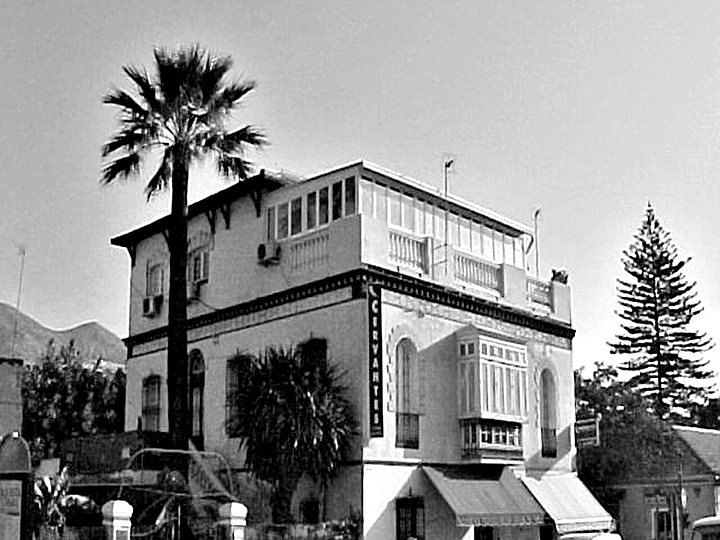 Facebook
Facebook
 X
X
 Instagram
Instagram
 TikTok
TikTok
 Youtube
Youtube


A mile east of the Tijuana International Airport is an area police call El Fin del Mundo, the End of the World, where drug-cartel assassins dump their victims. Both Mexican and American citizens have been found there. On December 18, 2004, according to Sergeant Tom Bulow of the San Diego County Sheriff's Department, San Marcos resident Noé Chávez García was lured to Tijuana by two acquaintances who shot him several times and left him in this corpse-disposal zone. He survived his wounds to tell his story to the FBI and Mexican officials. His is a rare case — he lived.
By Michael Hemmingson, Aug. 6, 2008 | Read full article

The Tijuana cartel as we know it today has its roots in the Mexican states of Sinaloa on the southeast side of the Gulf of California and Jalisco in central Mexico. A former Mexican Judicial Federal Police officer and bodyguard to Sinaloan governor Leo-poldo Sánchez, Miguel Félix was among the first Mexican drug lords to make connections with Colombian cartels in the mid-’70s thanks to his Honduran liaison Juan Matta. The U.S. government’s Operation Hat Tricks succeeded in cutting off Colombia’s cocaine supply route to south Florida in the mid-1980s, resulting in the fortification of relationships between Colombia’s Medellin and Cali cartels and Mexican trafficking organizations.
By Chad Deal, Sept. 22, 2010 | Read full article

One night, over frozen pot-pie dinners, I suggested something I was sure she would reject out of hand. “Let’s move to Tijuana.” Maria replied without pause, “I was thinking the same thing.”
Maybe the cheap rent and cost of living south of the border would give us some room to breathe, along with a chance of putting money back in our pockets. Because our American reality was that we didn’t have enough money to pay the rent, and moving to a different apartment was out of the question. I had about two-thirds of the current amount due in my pocket. In San Diego, all that would get us was evicted.
By Steven Strasser, Dec. 19, 2012 | Read full article

We park near the adobe bullring. The breeze picks up a little, here on the outskirts of Colonia Chilpancingo, a neighborhood in Tijuana. Nearby, a woman washes clothes in a concrete sink with water from a yard hose. Chickens scratch in the dirt around her earthen-walled home. She does not stop, nor does she look up as we pass.
By Dave Good, Sept. 5, 2012 | Read full article

It is with some reluctance that I write about my recent acquisition of the SENTRI border-crossing card because, well, I got a good thing going.
After years of standing for hours in that long, sinuous pedestrian line that huffs and puffs, lurches and shuffles north from the U.S. border station at San Ysidro, I finally applied for a SENTRI card. The acronym stands for Secure Electronic Network for Travelers Rapid Inspection.
I applied because the crossing had become increasingly intolerable. Some 18,000 pedestrians go into Tijuana each day, and the line, bad as it whenever you cross, is especially inchoate and disorganized during maximum-traffic hours.
By T.B. Beaudeau, Nov. 22, 2011 | Read full article

Spanish slang connoisseur Roxana Fitch grew up in Tijuana, birthplace of some of the most distinctive slang words — or jergas — in the entire Spanish-speaking world. The proximity of Tijuana, and of Mexico's entire border region, to the United States has spawned such English-influenced expressions as llamar pa' tras. "It's a literal translation of the English 'to call back,' which in Spanish makes absolutely no sense, but people say it anyway," Fitch says. "We borrow those words from English and adapt them, make them sound more Spanish."
Other examples of Tijuana/border slang: chiroquear, a verb meaning to install drywall, derived from Sheetrock, the leading brand of drywall. Lonche means lunch. Raitet means ride.
By Ernie Grimm, Aug. 6, 2008 | Read full article



A mile east of the Tijuana International Airport is an area police call El Fin del Mundo, the End of the World, where drug-cartel assassins dump their victims. Both Mexican and American citizens have been found there. On December 18, 2004, according to Sergeant Tom Bulow of the San Diego County Sheriff's Department, San Marcos resident Noé Chávez García was lured to Tijuana by two acquaintances who shot him several times and left him in this corpse-disposal zone. He survived his wounds to tell his story to the FBI and Mexican officials. His is a rare case — he lived.
By Michael Hemmingson, Aug. 6, 2008 | Read full article

The Tijuana cartel as we know it today has its roots in the Mexican states of Sinaloa on the southeast side of the Gulf of California and Jalisco in central Mexico. A former Mexican Judicial Federal Police officer and bodyguard to Sinaloan governor Leo-poldo Sánchez, Miguel Félix was among the first Mexican drug lords to make connections with Colombian cartels in the mid-’70s thanks to his Honduran liaison Juan Matta. The U.S. government’s Operation Hat Tricks succeeded in cutting off Colombia’s cocaine supply route to south Florida in the mid-1980s, resulting in the fortification of relationships between Colombia’s Medellin and Cali cartels and Mexican trafficking organizations.
By Chad Deal, Sept. 22, 2010 | Read full article

One night, over frozen pot-pie dinners, I suggested something I was sure she would reject out of hand. “Let’s move to Tijuana.” Maria replied without pause, “I was thinking the same thing.”
Maybe the cheap rent and cost of living south of the border would give us some room to breathe, along with a chance of putting money back in our pockets. Because our American reality was that we didn’t have enough money to pay the rent, and moving to a different apartment was out of the question. I had about two-thirds of the current amount due in my pocket. In San Diego, all that would get us was evicted.
By Steven Strasser, Dec. 19, 2012 | Read full article

We park near the adobe bullring. The breeze picks up a little, here on the outskirts of Colonia Chilpancingo, a neighborhood in Tijuana. Nearby, a woman washes clothes in a concrete sink with water from a yard hose. Chickens scratch in the dirt around her earthen-walled home. She does not stop, nor does she look up as we pass.
By Dave Good, Sept. 5, 2012 | Read full article

It is with some reluctance that I write about my recent acquisition of the SENTRI border-crossing card because, well, I got a good thing going.
After years of standing for hours in that long, sinuous pedestrian line that huffs and puffs, lurches and shuffles north from the U.S. border station at San Ysidro, I finally applied for a SENTRI card. The acronym stands for Secure Electronic Network for Travelers Rapid Inspection.
I applied because the crossing had become increasingly intolerable. Some 18,000 pedestrians go into Tijuana each day, and the line, bad as it whenever you cross, is especially inchoate and disorganized during maximum-traffic hours.
By T.B. Beaudeau, Nov. 22, 2011 | Read full article

Spanish slang connoisseur Roxana Fitch grew up in Tijuana, birthplace of some of the most distinctive slang words — or jergas — in the entire Spanish-speaking world. The proximity of Tijuana, and of Mexico's entire border region, to the United States has spawned such English-influenced expressions as llamar pa' tras. "It's a literal translation of the English 'to call back,' which in Spanish makes absolutely no sense, but people say it anyway," Fitch says. "We borrow those words from English and adapt them, make them sound more Spanish."
Other examples of Tijuana/border slang: chiroquear, a verb meaning to install drywall, derived from Sheetrock, the leading brand of drywall. Lonche means lunch. Raitet means ride.
By Ernie Grimm, Aug. 6, 2008 | Read full article
Comments